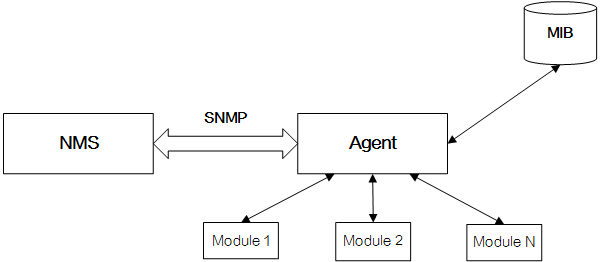SNMP-based Network Management
The SNMP-based network management consists of the following four components:
NMS
The network management station (NMS) is an independent device that runs the network management application.The network management application provides at least one human-machine interface (HMI) through which the network administrator manages the network.
SNMP agent
The agent is the software installed on the managed node. It receives and handles the request packets from the NMS, and returns responses to the NMS. In some urgent cases, the agent sends a trap packet to the NMS.
SNMP
As an application layer protocol in the TCP/IP suite, SNMP exchanges management information between the NMS and the managed node.
MIB
The Management Information Base (MIB) is a set of managed objects (MOs). It acts as a communication bridge between the NMS and the agent. The NMS manages the devices by using the MIB. Each agent maintains an MIB. The NMS reads or sets the value of an object contained in an MIB.
Figure 1 illustrates the SNMP-based network management.
The following describes the components shown in Figure 1 and the interoperation between them.
The NMS communicates with the agent through SNMP. The NMS monitors and manages the device where the agent resides by reading or writing the objects in the MIB.
SNMP is responsible for the communication between the NMS and the agent. Data is encapsulated in the protocol data unit (PDU) defined by SNMP. The SNMP packets are transferred through the transport layer protocol such as UDP.
The agent is a process running on a managed node. The agent interoperates with the NMS, maintains the MIB, and manages and monitors modules on the managed node.
The MIB stores the information about each module of the managed node. The NMS maintains and monitors a managed node by reading or writing the objects contained in the MIB.
